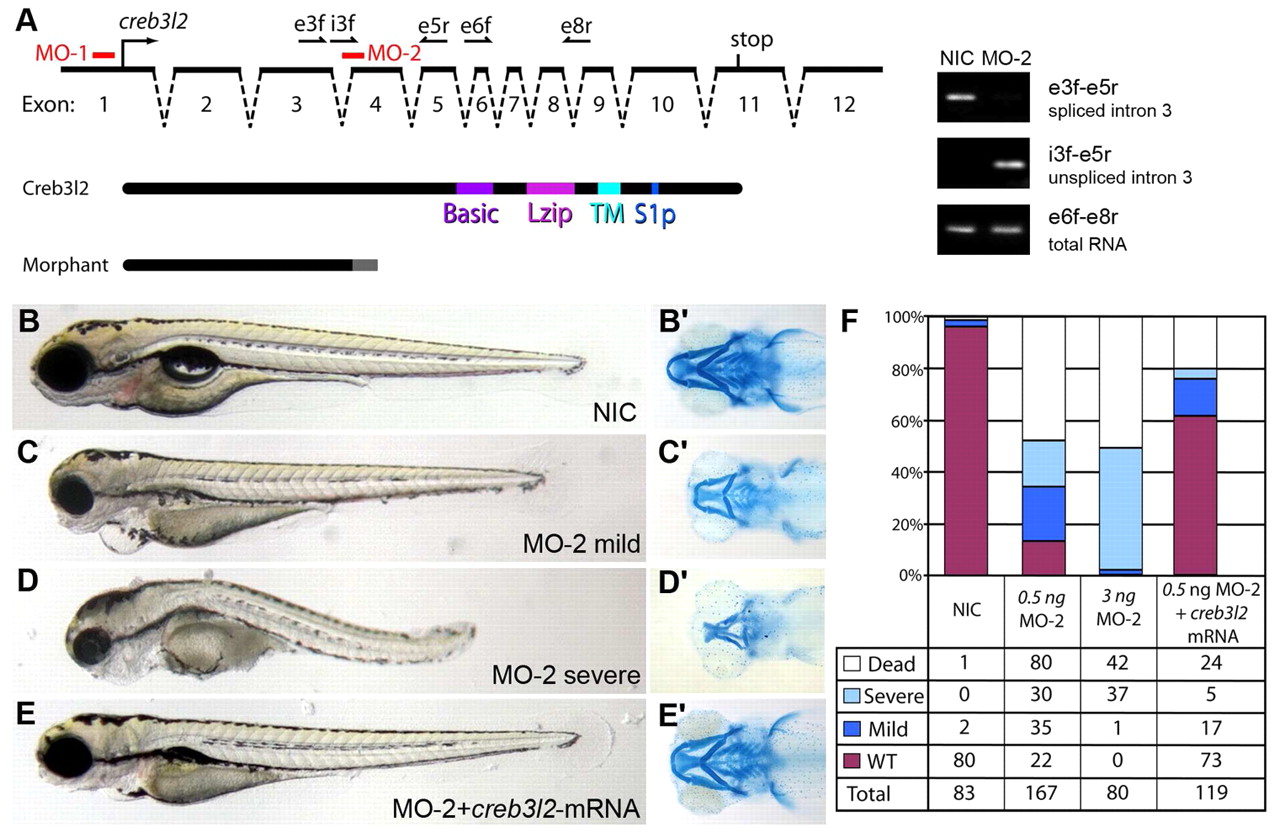Fig. 6 Decreased Creb3l2 function is responsible for the feelgood phenotype. (A) Schematic representation of the creb3l2 gene structure and positions of the two morpholinos MO-1 and MO-2 used in knockdown experiments. The names, position and orientation of specific primers used to evaluate the effectiveness of MO-2 are shown on top of the genomic locus diagram. Exonic primers are indicated by an ‘e’, intronic primers are indicated by an ‘i’. The predicted truncated form of the protein caused by MO-2 compared with the full-length wild-type protein is shown below (Morphant). PCR amplification products representing spliced and unspliced creb3l2 mRNA as compared with total creb3l2 mRNA in embryos injected with 3 ng MO-2 is shown on the right gel electrophoresis images. The primers used for amplification are shown on the right images. (B–E′) Live (lateral; B–E) and Alcian blue stained (ventral; B′–E′) images of 80-hpf embryos injected with 0.5 ng MO-2 (C,D), or MO-2 plus creb3l2-mRNA (E). NIC, non-injected control is shown in B. (F) Quantification of knockdown and mRNA rescue experiments indicates the percentage of embryos in the four phenotypic classes observed.
Image
Figure Caption
Figure Data
Acknowledgments
This image is the copyrighted work of the attributed author or publisher, and
ZFIN has permission only to display this image to its users.
Additional permissions should be obtained from the applicable author or publisher of the image.
Full text @ Dis. Model. Mech.

